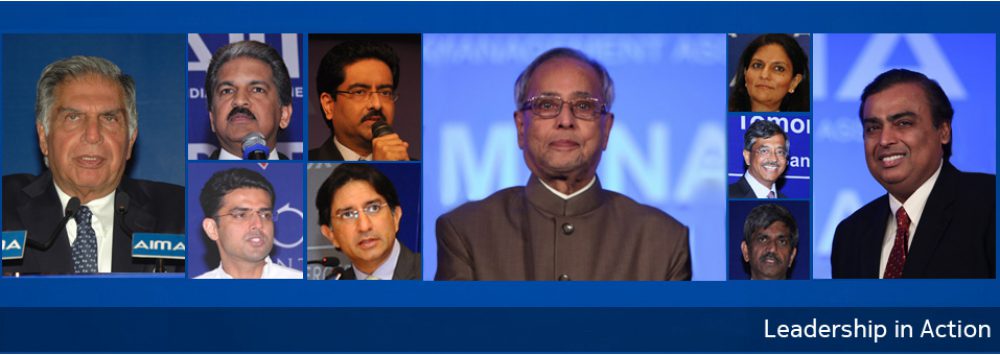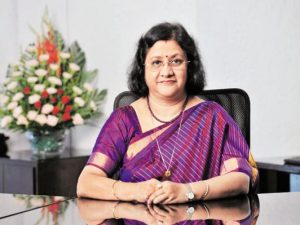Arundhati Bhattacharya, Chairperson and CEO, Salesforce India and Former Chairperson, SBI shared how she has chronicled in her book “Indomitable – A Working Woman’s Notes on Work, Life & Leadership” her journey of formative influences, personal and professional struggles, and lessons learned at AIMA’s Leader Speak.
Since the appointment of the first Probationary Officer of SBI (State Bank of India) in 1960, it took 53 years for a woman to break the glass ceiling and become the Bank’s Chairman. Ms Bhattacharya was that very lady in question.
The journey for Ms Bhattacharya was one of overcoming immense odds to become a successful banker, which she has chronicled in her book-
“Indomitable – A Working Woman’s Notes on Work, Life and Leadership” along with recording her realization of strengths and weaknesses while handling different aspects of her life; career management, corporate leadership and work-life balance.
While speaking to Mr Sunil Kant Munjal, Past President, AIMA and Chairman, The Hero Enterprise at AIMA’s Leader Speak, she started off by saying that it was those little anecdotes in her career life that added up to making it a full-rounded journey. One instance is that of a security guard in her office, who lent her money to take a bus home as she had forgotten her purse. She also added that once you climb the rungs of the hierarchy ladder, you get disconnected from the grass-root level that was once a part of your life, and you should not forget where you started from.
SBI is one of the most advanced banks in terms of technology and Ms Bhattacharya has had a pivotal role in introducing many an innovation in the bank. So, how difficult it was to transform the bank into a digital organization?
“The main issue when you go for transformation is to understand the people’s expectations from the transformation,” said Ms Bhattacharya. For digitizing the bank, she took an approach of creating branches to be visited by her staff, as well as the customers, for them to see how entirely different they looked from any other branch, as they had things like an ATM machine, cash deposit machine, cheque deposit machine, passbook printer to self-service themselves on the front space and a team of staff who would later guide them to do their banking work through touchscreens, smart tables etc. It was a way of saying that digital banking is way different from Internet Banking alone or automating processes.
Ms Bhattacharya also had to deal with many Unions and Union Leaders in her career, so what was her experience in that regard? She said that the Union Leaders are extremely intelligent people and they want to be acknowledged. She went far from acknowledging them. She actually gave them their due share of responsibilities even though she faced opposition from her staff. And she relates how there was no backlog of work when she gave one such Leader the responsibility, which he carried out efficiently.
On gender sensitization, encouragement and balance at workplaces, she said that prejudices have to be eradicated in legacy companies. She added that in the Banking Sector there’d only be 4% women left in the top management with 33% of female entrants having joined a bank earlier. There are many biases about women not being able to undertake challenging tasks hence talents are lost in the way. All these issues need to be addressed properly, she added.
On Indians adapting to situations quickly, she said that India is a country with low resources hence that make Indians hard working. She further added how the concept of “jugaad” makes them innovative, as they make the best use of their frugal resources, upcycle and recycle them.
Finally answering the question if there will be a change in the current banking system, she said that she was sure there will be, but was uncertain about the kind of structure it would have. However, she said that there has to be a bridge between the Banks and the Fin-Tech companies. While banks house the trust of the customers, Fin-Techs have the solutions.
Watch Full Session Video here: https://www.youtube.com/watch?v=2tMSMF0w080




